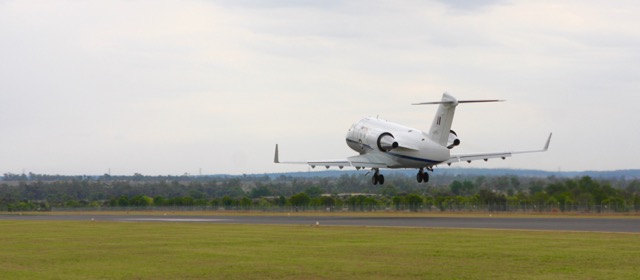
Posts about stuff relating to airports

Off the Hook: Kangaroo Collision Case Appeal Allowed
A little over a year ago, I wrote about a court case involving the owner of an aircraft claiming damages from an aerodrome operator after their aircraft collided with a kangaroo on landing. I was pretty proud of that post as I had exercised some newly developed court judgement reading skills. So, of course, the legal system would have to go an turn all that on its head and change its mind. It turns out that the aerodrome operator was not liable for the damage.
Let’s find out why and whether we agree with them…
Image credit: Altered photo by Scott Calleja

Wildlife Risk Management Series
A long time ago I wrote a rather comprehensive series on wildlife hazard management within an ISO 31000 risk management framework. It was the launch series for the New Airport Insider website and quite a bit of work on my part - but I enjoyed it. So, I thought I would repackage it as a quick blog post with links to each article.

The $200K Kangaroo
I’m not a big fan of safety tropes. They are often repeated without much thought and eventually this repetition becomes detached from the concept the trope is trying to convey. With many tropes, there are few non-trivial or non-catastrophic events that can reinforce the trope.
The saying on my mind today is “if you think safety is expensive, try having an accident”. The “accident” I often think about is something big, something catastrophic and something that happens to other people. I rarely uttered this trope because I, personally, didn’t feel the power of it.
Now, thanks to a court case in Australia, I feel the power has been returned to this saying. We know have a non-catastrophic event with quantifiable costs associated with the “safety” part and the “accident” part. Plus, I think nearly every airport safety professional out there can empathise with the operator in the case
Noun-based Regulation
The modern world is definitely in love with its noun-based activities. Each week, a paradigm-shifting approach to some human endeavour is announced with a title like value-based health care or outcome-based education. When I delve into the details, I am generally left either confused as to what they are selling or how they are different at all. Regulation is no different. Just plugging "based regulation" into Google yields, on the first page alone, principle-based, results-based, performance-based, outcomes-based and output-based regulatory approaches.

BTII: Control-freak*
As a follow-on to my first post on the Bow-Tie risk assessment method, I thought I'd concentrate on controls (or barriers or whatever else you would like to call them). This is, after all, where all the action happens. Risk controls are how we spend most of our time - they are the practical aspect of managing risk.

BTI: Dressing up for Risk Assessments
I've been doing a lot of pondering on the Bow-Tie method of risk assessment for a project at work. Bow-Tie is a tool used by many, especially in the oil & gas industry, to create a picture of risk surrounding a central event. It's got a few positives and a few negatives but these can be overcome if you understand the limitations of the model being used.

As Low As Reasonably Practicable
It's another staple of the risk management diet but while I believe this one to be a completely valid concept, I can't help to feel that its being served up underdone. This time I'm talking about ALARP - As Low As Reasonably Practicable. To define ALARP, at least how I do, would probably negate the need to write the rest of this post. So let's just say that ALARP is the point at which any further reduction in risk would require resources significantly greater than the magnitude in the benefit gained*.
Image credit: Sam Willis (via Pexels)

On the Shoulders of Giants
I can't rule out that I had already viewed this presentation and the words pathways and proximal became lodged in my mind - seeds sown to sprout some distant day in the future. But upon reading this document (again?) I was struck by the apparent similarities with my proposed risk evaluation methodology, which was the subject of much ranting a few weeks ago - here, here, here, here and here.
Find out what presentation by reading on…

Wrapping Up PIGs .... For Now
Since I don't just want to be thought of as some PIG-hating obsessive lunatic, lets wrap this thread up for the moment. Quick recap: The traditional likelihood-consequence matrix (PIG - see original post) is not particularly useful when dealing with aviation safety. Why? Because a graduated consequence scale fails to recognise the perilous nature of aviation and consequence as a dimension isn't particularly useful when evaluating latent conditions remote from the ultimate outcome (death by aviation).
Alternate approach: Instead of scoring the consequence directly, I've offered two alternative dimensions under the generic title of influence1 - proximity and pathways.
In wrapping this up, I thought I would discuss what I think is the rationale behind this approach of using slightly off-centre indicators.

Influential Behaviour
Near the end of my last post, I used the Swiss-cheese model to highlight that many risk conditions1 worthy of attention are not necessarily proximate to the ultimate outcome. I also hinted in the post before that, that I thought this to be only half the story. To tell this story, let me introduce another accident causation modelling technique. It is called an AcciMap and it is gaining popularity because it offers a way of representing the relationships between events (these being things such as decisions, functions, tasks, actions, etc.). An AcciMap is set up in two dimensions with vertical lanes separating system levels of increasing generality as you move up and the horizontal axis having no fixed dimension or scale. The system levels begin very specific to the accident in question with equipment and actor activities making up the first two levels. The higher levels relate to organisational, regulatory authority and government policy and decision making.

One Step Back...
In continuing this little series I've got going here, I'd like to just quickly go back over a couple of points from last time. I'm trying to keep these posts relatively short. So that means I may have moved on to my next point a little too quickly. I guess the crux of the last post was that a graduated consequence scale is inappropriate in an aviation safety context. My two main points to back up that statement were:
the potential for a catastrophic event is persistent to the primary aviation activity of flying from A to B; and
that given aviation is a complex socio-technical system, risk conditions (call them hazards, events, or even just risks) upstream of the ultimate condition (death by aviation) cannot be categorised effectively.
I tried a few of these arguments out on some colleagues and they seemed unconvinced. So, I'm going to work on them a bit more here - this blogging thing is much more for my benefit than yours but thanks for stopping by anyway ;).
One step back...

Vulnerability & Proximity
In my last post, I commenced a whinge about the PIG or as it is more commonly known, the likelihood-consequence matrix. I signed off that post with a promise to further the discussion on the risk matrix within an aviation safety context. Here goes...
Consequence is an inappropriate dimension to consider in aviation safety. For two reasons which I call vulnerability and proximity. Let's take them in turn.
